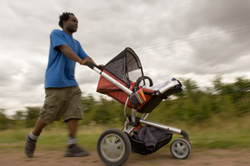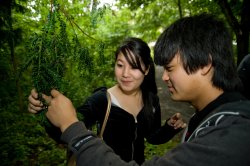Summary
Does the Forestry Commission meet the needs of all its users?
Summary
The Forestry Commission wanted to synthesise the available information about diversity and equality of access to wood lands and forests. The evidence collected and analysed by Forest Research provided evidence for policy development, suggesting how user engagement, activities and modifications in services could help to improve social inclusion.
lands and forests. The evidence collected and analysed by Forest Research provided evidence for policy development, suggesting how user engagement, activities and modifications in services could help to improve social inclusion.
Key findings
Common barriers to woodland use:
- Transport to sites – could they be reached easily and cheaply?
- Site condition – was it free of litter and signs of vandalism?
- Site design – was there a feeling of welcome and was planting not too dense?
- Provision of appropriate facilities – were there toilets or access structures?
- Advertising, signs and interpretation – did it suit the needs of and engage with all visitors?
- Some ethnic and age groups found woodland activity carried social stigma – teenagers, for example, feared accusations of anti-social behaviour if they spent time in woods
The impact of woodlands on equality and diversity:
- Building social relationships – woodlands provide a place to meet and walk with family and friends
- New sensory experiences – the chance for new sensory and skills-based experiences, and the chance to take part in exciting forms of independent play
- Better health – walking through woods is an important form of exercise; being in woods and forests relieves everyday levels of stress and improves mental well-being
Publications and presentations
- Report– Equality and Inclusion of Social Diversity with respect to Woods and Forests in the UK: An Evidence Review (PDF-701K).
Funders and Partners
Commissioned and funded by the Forestry Commission.
Status
This project was completed spring 2009.
